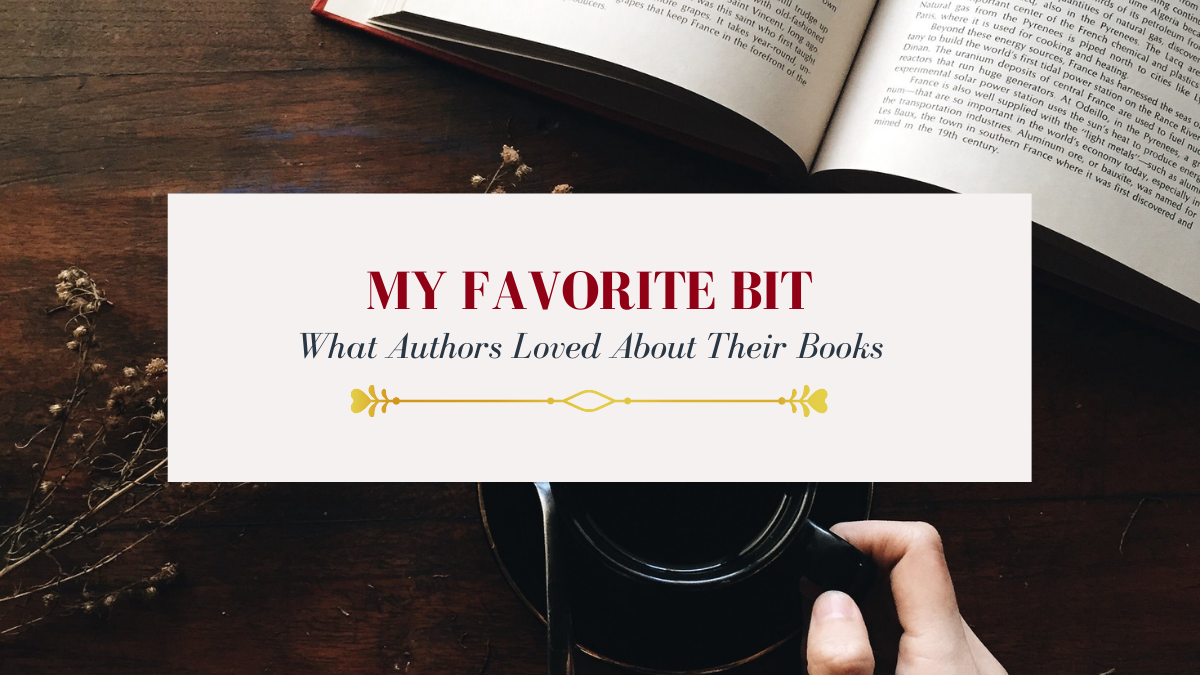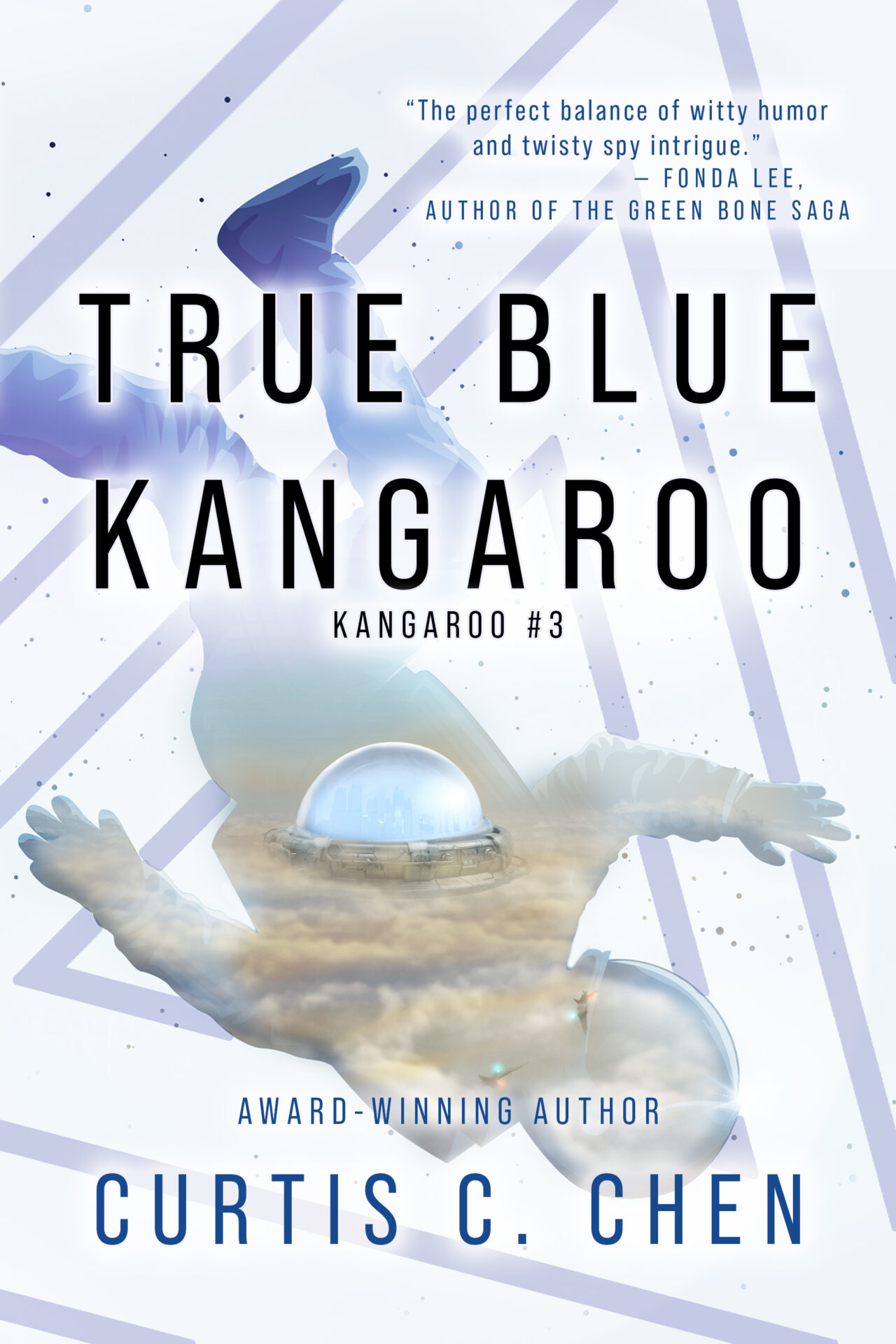
Curtis C. Chen is joining us today to talk about his novel, True Blue Kangaroo. Here’s the publisher’s description:
Kangaroo doesn’t want to go to prison?
Too bad, Kangaroo!
Be seeing you.
Welcome to the future, where humanity travels between planets with ease and has abused that power to establish outposts in the most unlikely places.
Take Venus, for example: a sister world to Mother Earth, similar in size and gravity, it’s also known for having a toxic atmosphere and hellish landscape at ground level. But climate-controlled habitat domes stay in eternal sunlight and offer vacationers endless good times while floating through blue skies above the clouds of deadly acid.
Meanwhile, hidden down inside those poisonous clouds are other floating habitats, so-called “blue sites”—government-run secret prisons where inmates are incarcerated with no oversight and no hope of escape.
And why, pray tell, would secret agent Kangaroo, with his pocket superpower and agency-issued biotech implants, need to infiltrate such a secure facility? Might it be to rescue another spy who’s gone radio silent? Or perhaps to extract a high value asset who claims to have been wrongly imprisoned therein? Possibly both?
It’s six of one, half a dozen of the other. Questions are a burden to others, and answers a prison for oneself.
What do you want? Information? That would be telling.
Set in the same world as WAYPOINT KANGAROO and KANGAROO TOO, this high-octane science-fiction spy thriller, teeming with adrenaline and intrigue, continues spinning blockbuster outer space adventure.
What’s Curtis’ favorite bit?

My third Kangaroo novel features a wacky futuristic lockup inspired by the cult-classic 1967 Patrick McGoohan television series “The Prisoner.” Wait, come back! I promise this is actually interesting!
Okay, fine, you’ve never heard of “The Prisoner.” (To be clear, I am not talking about AMC’s bogus 2009 remake, which you also haven’t heard of, and I’m definitely not talking about Denis Villeneuve’s hyper-mega-bummer 2013 film Prisoners with Hugh Jackman and Jake Gyllenhaal–LOOK APPARENTLY “PRISONER” IS A POPULAR WORD IN SHOW TITLES FOR SOME REASON, MOVING ON.)
Trust me, “The Prisoner” is your favorite TV showrunner’s favorite TV show. It has influenced everything from “Lost” to “Babylon 5” to “The Simpsons.” My personal fascination with this short-lived phenomenon (it ran for only seventeen episodes in the UK) extends back to the 1980s, when teenage Curtis was watching a lot of Britcoms on our local PBS station late at night. You know: “Monty Python’s Flying Circus,” “Red Dwarf,” “Are You Being Served?”, all the classics. So I was aware of “The Prisoner” and immediately became fascinated with its whole “science fiction spy mystery” vibe (sound familiar?), but it never actually aired on my affiliate.
In 1988, I got my hands on a copy of the then-new paperback The Official Prisoner Companion by Matthew White and Jaffer Ali. To this day, I remember poring over that text more vividly than I remember actually, finally watching the show in later years. (Side note: I also read the authorized sequel comic, Shattered Visage, before ever viewing the original series.) And just as watching a TV show made in the 1980s does not tell you what the 1980s was actually like to live through, reading about a TV series is very much not the same as the experience of watching the show itself.
All of this inspired the backstory that informs a big part of my main character Kangaroo’s personality:
- he was orphaned at a young age;
- his only connection to his dead parents was their archive of twentieth-century entertainment media that they had studied as academics;
- so young Kangaroo watched a lot of old movies and TV while growing up; and
- that leads to him now constantly making outdated jokes and references that are meaningless to his colleagues.
Comedy gold! You’re welcome.
So why, you may ask, was “The Prisoner” so great anyway? Well, this is awkward…
It’s a deeply #IYKYK situation, which I acknowledge is also an extremely meta reference, but that’s honestly the best way I can describe it. This isn’t even some Matrix-type “You have to see it for yourself” tomfoolery, because after you see it, you’ll have even more questions. Why are they all dressed like that? What’s up with the numbers instead of names? And what is the deal with that freaky weather balloon thing?
All of this weirdness made “The Prisoner” (yes I am always going to put the title in quotation marks, DEAL WITH IT) the perfect inspiration for Cerulean City, the secret “blue site” on Venus where Kangaroo needs to go undercover as a (…wait for it…) prisoner. But am I going to get sued by ITC for all the blatant, not even mildly disguised references? Like just straight-up lifting turns of phrase like “be seeing you” and “that would be telling” and “why did you resign” and many more?
As they say in the Village: questions are a burden to others, and answers a prison for oneself. (That’s literally in the back cover copy for my book. COME AT ME BRUV)
LINKS:
BIO:
Once a Silicon Valley software engineer, Curtis C. Chen (陳致宇) now writes stories near Portland, Oregon. His debut novel Waypoint Kangaroo (a Locus Awards and Endeavour Award Finalist) is the first in a series of funny science fiction spy thrillers, followed by Kangaroo Too (which received a starred review from Publishers Weekly) and True Blue Kangaroo, with a fourth book coming soon. He has written for the Realm original podcasts Echo Park, Ninth Step Murders, and Machina.
Curtis’ shorter works have appeared in Playboy Magazine; the ENNIE Award-winning Kobold Guide to Roleplaying; The Year’s Best Fantasy, Volume 2; Aliens vs. Predators: Ultimate Prey; and elsewhere. His homebrew cat feeding robot was displayed in the “Worlds Beyond Here” exhibit at Seattle’s Wing Luke Museum. He is a graduate of the Clarion West and Viable Paradise writers’ workshops.
Curtis is not an aardvark.
